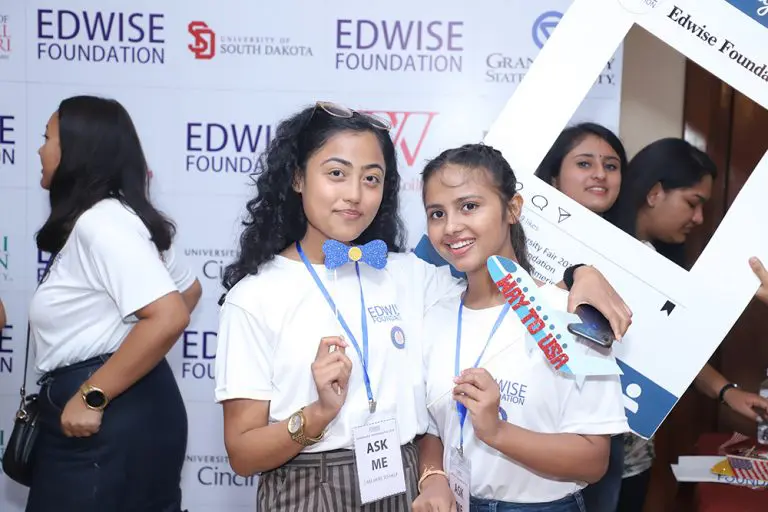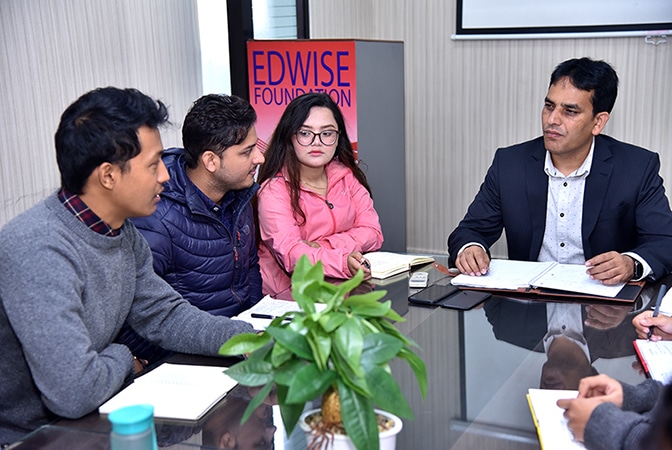EVERY THING YOU NEED TO KNOW ABOUT STUDYING IN USA FROM NEPAL
The USA is a top global study destination for Nepali students looking to access world-class education and career opportunities. With a range of prestigious universities, cutting-edge research facilities, diverse student communities, and strong graduate employment prospects, the USA offers exciting academic and personal growth experiences.
Proper planning is key to navigating the complex application processes, visa formalities, travel logistics, and adjustments to life abroad. To ensure a smooth journey, consider consulting the best consultancy in Nepal for the USA.
This comprehensive guide covers everything Nepali students need to know to successfully study in the USA from Nepal, starting in 2025.

Why Study in the USA?
The USA has been the top choice for Nepali students studying abroad for years due to several key advantages:
- Academic Excellence: US universities dominate global higher education rankings. Renowned for academic rigor, research intensity, and expert faculty.
- Research Opportunities: Undergraduate and graduate students actively participate in innovative research across disciplines.
- Cultural Diversity: Campuses embrace diversity and international perspectives that enrich learning.
- Career Prospects: US degrees unlock strong global employment potential and pathways to skilled migration.
Timeline and Planning
Navigating the complex application and visa processes requires starting preparations 12-18 months in advance:
- 12-18 Months Before: Research programs and shortlist universities based on academic fit, budget, and other priorities. Register for standardized admission tests like SAT, GRE, or GMAT.
- 9-12 Months Before: Prepare application materials including essays, recommendation letters, and portfolio. Take language proficiency tests if required. Apply for financial aid and scholarships.
- 6-9 Months Before: Monitor application status. Compare admission offers and finalize the university/program. Apply for a student visa once acceptance and I-20 are issued.
- 3-6 Months Before: Confirm accommodation. Book travel arrangements. Purchase insurance coverage. Handle banking, packing, and other pre-departure tasks.
Choosing the Right Program and University
With over 4,000 accredited universities in the USA, selection involves prioritizing:
- Academic Reputation: Check national/global rankings, faculty qualifications, research outputs, alumni outcomes, and accreditation.
- Program Offerings: Validate course structure, specializations, and clinical/co-op opportunities to match interests and career goals via university websites and prospectuses.
- Location: Consider varied lifestyles, weather, diversity, and transport access between rural college towns versus urban campuses.
- Campus Culture: Leverage online student testimonials and outreach offices to gauge overall student experience.
- Cost and Financial Aid: Confirm tuition fees, scholarship availability, cost of living expenses, and post-study work eligibility per location.
Application Requirements
US university applications demand extensive supporting materials:
- Transcripts: Official high school and university transcripts showing strong GPA per program standards.
- Standardized Test Scores: SAT, GRE, or GMAT scores meeting departmental cut-offs. May be waived for certain programs.
- Letters of Recommendation: 2-3 recommendation letters from teachers or employers validating abilities.
- Personal Essays: Well-written essays showcasing knowledge, motivation, and research alignment with target programs.
- Application Fees: Typically $50 and upwards per application. Waivers are possible based on financial need.
Financial Aid and Scholarships
Financing studies requires pursuing all possible support channels:
- Merit-Based Scholarships: Awarded by academic departments based on student application strength.
- Private Scholarships: Offered by external foundations and organizations based on various eligibility criteria. Extensive applications are involved.
- Student Loans: Government and private student loans enable managing residual costs through flexible repayment plans.
Student Visa (F-1 Visa)
Once accepted, the F-1 visa process entails:
- Obtain an I-20 Form: Critical proof of admission status issued by universities to initiate visa applications.
- Pay the SEVIS I-901 Fee: $350 government administrative charge payable at fmjfee.com
- Complete the DS-160 Form: Online student non-immigrant visa application with biometric enrollment.
- Schedule and Attend a Visa Interview: In-person interview scheduled at the US Embassy in Kathmandu. Demonstrate academic preparedness and ties to Nepal.
Pre-Departure Preparations
Finalizing tasks before departure:
- Accommodation: Confirm housing placements and coordinate arrival timing with on-campus support staff.
- Flights: Book tickets matching I-20 and visa validity periods. Schedule adequate buffers for connections and jet lag adjustment pre-classes.
- Health Insurance: Purchase comprehensive overseas student health insurance covering medical, travel disruptions, etc.
- Packing: Organize visa paperwork, bank/medical documentation, electronics, clothes suitable for the climate. Ship items if overweight.
- Finances: Arrange sufficient funds for tuition, living costs, and emergencies via education loans, family support, and foreign accounts. Carry $1,000+ in cash/forex cards.
Adapting to Life in the USA
Give yourself time to acclimate through:
- Orientation: Attend onboarding programs connecting you to key campus services. Create transition checklists.
- Academic Advisor: Consult assigned program counselors to clarify program planning queries.
- Cultural Adjustment: Be open-minded. Immerse yourself progressively in the local community through clubs and part-time work.
- Social Connections: Bond with fellow students when starting. Talk openly about transition hurdles.
- Support Services: Leverage counselors, international student groups, and mental health services to seek help adjusting if struggling initially. Don’t isolate yourself.
Additional Tips
Further advice for success:
- Research: Thorough advance research around program structures, application norms, and immigration policies smooths planning.
- Network: Connect early with alumni and current students for campus insights.
- Stay Organized: Meticulously track deadlines and compliance requirements across the multi-year process.
- Be Patient: Expect setbacks and delays. Maintain composure and persistently follow up across all channels.
- Embrace the Experience: Approach changes with an open mind. The rewards outweigh short-term discomforts when immersed positively.
Studying in the US offers immense learning and career opportunities. With vision, commitment, and timely preparations accounting for realities like financial investments, cultural adjustments, and administrative obligations across 2+ year timelines, Nepali students can fulfill academic dreams at globally respected US universities for bright futures.
KEY CONSULTANT FOR US STUDYING IN USA FROM NEPAL
Mr. B.M. Khadka serves as the Head of the Consulting Team. He holds a Master’s in English Education and has been consulting since 2002.
He attended attended more than two dozen of workshops and trainings in the United States and presented papers in different forums. He is a NAFSA Individual Member.
He is well backed up by Mr. Abhishek Regmi, who studied at American University, Washington DC, and Mr. Suraj Tamrakar who studied at Louisiana Tech, LA along with Ms. Sarojani Basnet, who has been advising since 2007.
Our consulting team possesses professional qualifications like USATC, TITI and others.
